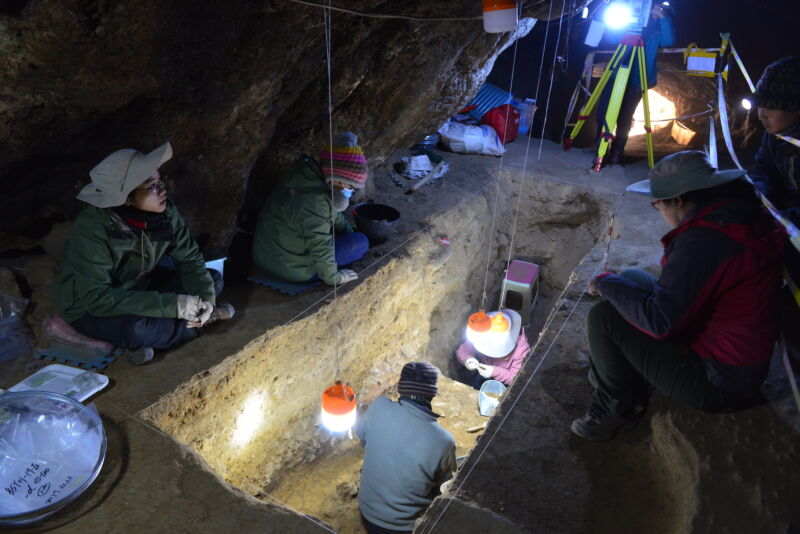Ancient skull a new window on human migrations, Denisovan meetings

Enlarge / These excavations identified Denisovan DNA within the sediment. (credit: Dongju Zhang, Dongju Zhang, Lanzhou University)
The Denisovans occupy a very weird place in humanity's history. Like the Neanderthals, they are an early branch off the lineage that produced modern humans and later intermingled with modern humans. But we'd known of Neanderthals for roughly 150 years before we got any of their DNA sequence and had identified a set of anatomical features that defined them. By contrast, we had no idea that Denisovans existed until their DNA turned up unexpectedly in a single, tiny piece of finger. And, to this day, we've not identified enough remains to really say anything about what they looked like.
But, over time, we've gotten increasing ancient DNA samples that are providing a clearer picture of our interactions with this enigmatic lineage. Now, two new reports describe ancient DNA that provides some more details. One paper describes a modern human genome from Asia that dates to closer to the time when interbreeding must have taken place. It provides further evidence that there were at least two instances of interbreeding, and it helps clarify how early human populations moved around Asia. The second confirms that Denisovans were living along the Tibetan Plateau and may have adapted to high altitudes.
The Mongolian skullBack in 2006, mining in Mongolia's Salkhit Valley turned up the top of a skull that was clearly old. But, because it didn't have any definitive features, people argued over whether it might be Neanderthal or Homo erectus. However, preliminary DNA sequencing indicated it belonged to a modern human, with carbon-dating placing its age at roughly 34,000 years old.
Read 13 remaining paragraphs | Comments